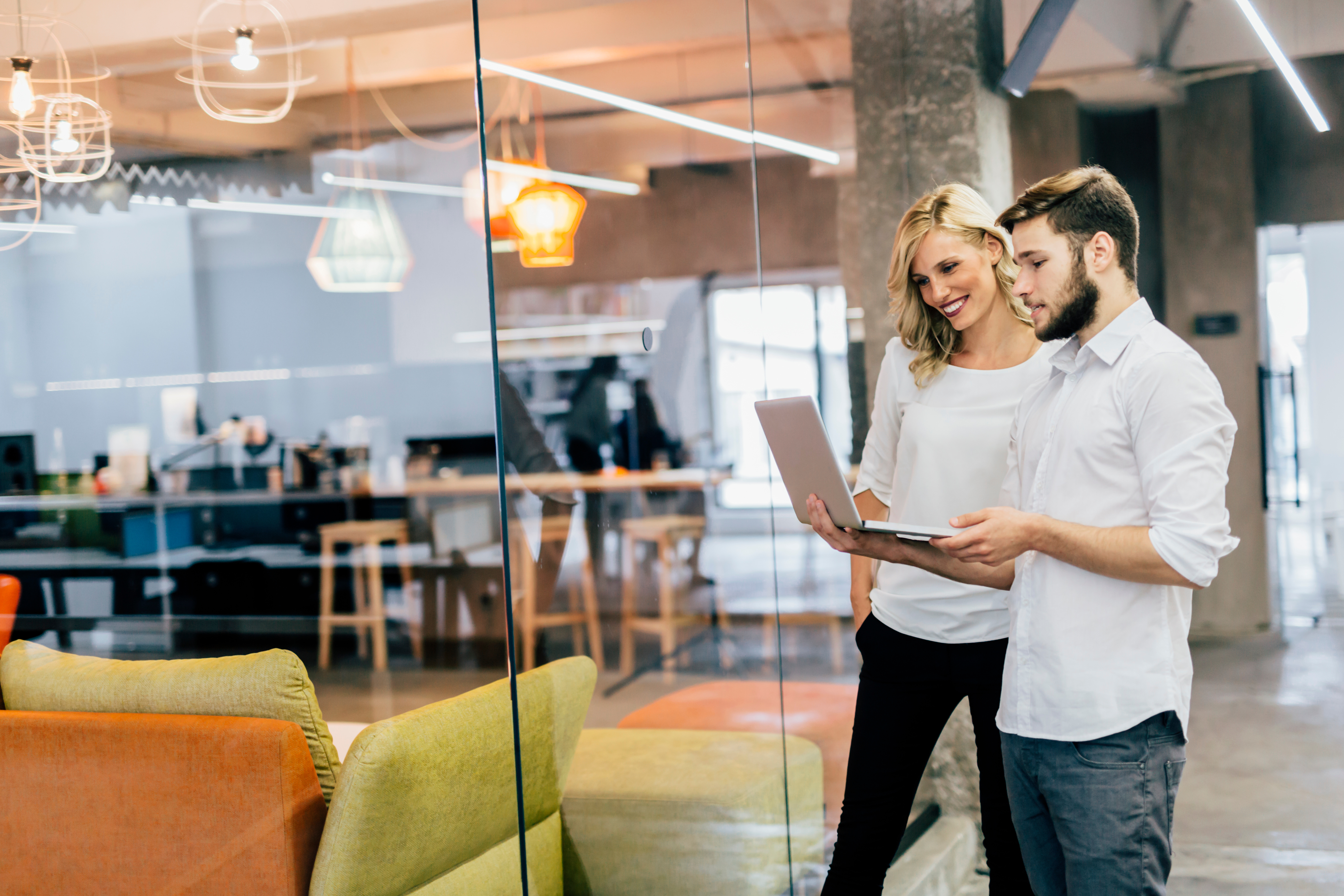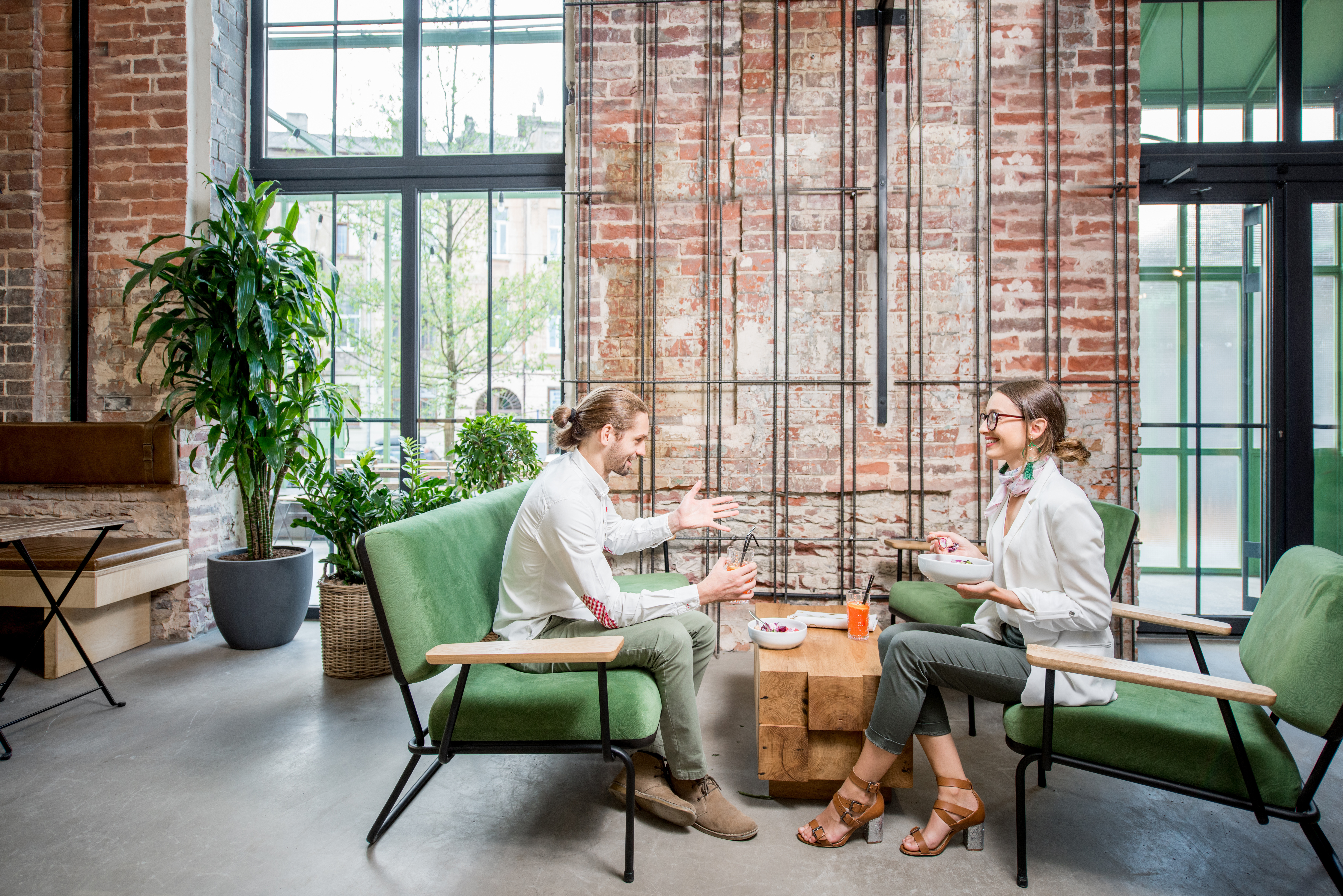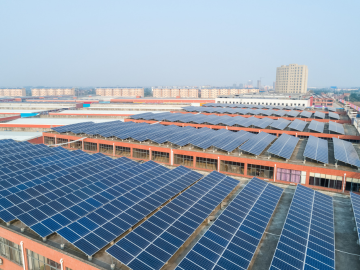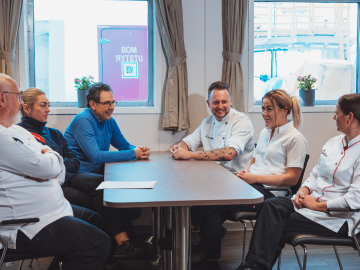How to Futureproof Your Workplace in 8 Steps
The workplace is changing, and employees are expecting more. Companies must work harder than ever to create inspiring and optimised workplaces that invite people in and compel them to interact, socialise, connect and share.
If you’re ready to take that step, download our new guide to uncover how we can help you prepare for and embrace the new era of work.
The Energy industry is innovating at a pace few other industries can match, yet it is tackling some of the biggest issues of our time such as talent attraction and employee retention. So what is it about workplace design that can help companies improve the wellbeing and happiness of their employees while saving on running costs?
What makes office design so important anyway?
A key issue affecting many of today's industries is employee experience, without which staff feel disengaged, unmotivated, and unproductive. With 78% of employees wanting location flexibility, a great way to tackle this is to improve company culture with in-person offices that invite, welcome, and nurture a sense of community among workers.
There is huge value in people being together, particularly for team morale. Physical office space is vital for building collaboration and human experience, as its effect on workers is one of the key challenges companies wish to address when considering a redesign. Offices are also the ground zero of branding and can showcase a company's core values.
Following COVID19, the main trend I've seen coming through is a steer towards more human-centric environments. That means providing a range of settings in an office that caters to specific tasks.
Claire Ritchie, Interior designer and Architect for Sodexo Energy & Resources
Ensuring an office that suits everyone's requirements means interiors, layouts, and furniture that welcomes and invites. But what are some specific criteria for creating an efficient and thriving workplace with happy employees?
Our tips and tricks for a successful workplace
Offices need to adapt to a new era of work. But what changes make the most impact? Read our top suggestions for creating an inspirational workplace of the future:
1) Carefully consider the layout of your spaces
In a new era of flexible and hybrid working, agility is vital. Build large open-plan areas that can adapt to any need, with a variety of desk types that are ideal for informal meetings or individual work. Multifunctional rooms can be used as social spaces, dining areas, presentation arenas, and flex for informal meetings. Movable furniture further enables true elasticity of the space according to usage.
When working with the energy sector, our approach is always open to change. The dynamic nature of the business means constant adaptation is key for a successful design.
Claire Ritchie, Interior designer and Architect for Sodexo Energy & Resources
2) Noise management is critical for concentration
Although the focus remains on large, open-plan, adaptable spaces, individual meeting rooms are still incredibly valuable. They offer a quieter, more private solution for those needing a place to concentrate or hold official meetings. Additionally, many new offices opt to remove ceilings to create visual interest and height, but this does not account for acoustic issues that may arise. Noise-dampening discs can condense and absorb noise efficiently while adding a contemporary aesthetic.
3) Think carefully about using sustainable materials that ensure energy efficiency and can be recycled
Everyone understands the benefits of building a workplace that fits sustainability goals for the planet, costs, and employee engagement. When completing our redesign of our client's office in Aberdeen, we used as many eco-friendly materials as possible, including the reuse and upcycling of old office furniture. That meant reinstalling 490 desks and screens and diverting approximately 29,400kg from landfill.
4) Use lighting to your advantage
Evenly distributed natural light has been shown to improve productivity, so make sure to let in as much as possible. On the other hand, floodlighting and focused lighting with pendants, downlights, and spotlights all help create visual texture and can be used to organise spaces into distinct zones, while dimmers can help transform areas for different dayparts.
5) Biophilia can bring the outside in
Over the last few years, there has been a move towards the use of hanging plants and horticulture. Live plants work particularly well because of their added benefits, such as improved air quality, noise-dampening effects, and their ability to regulate temperatures. Meanwhile, even artificial plants are great for adding much-needed greenery while keeping maintenance costs low.
6) Choose colour palettes that are calming and inviting

While offices need to represent core company values, it does not necessarily have to be entirely branded in company colours. For example, One Southampton Row, Sodexo's Headquarters in London, is not exclusively used by our employees but is also somewhere we greet our clients and suppliers. Therefore, we wanted the space to be adaptable and chose an alternative calming, muted colour palette to create a welcoming atmosphere.
Sodexo's Energy & Resources
Sodexo's Energy & Resources are food and facilities management leaders, serving millions of people who power, supply, and transform our world.
We believe energy and mining companies deserve better service than the usual industry standard. So we're raising the bar. It means we empower our frontline teams to be your day-to-day partners –anticipating and responding to your needs, solving your challenges, and improving our support every day.
Good enough is no longer enough. We're committed to designing energy sector workplaces that put wellbeing at their heart, enhance the employee experience, and optimise productivity, all enabled by user-centric technology.
Find out more about Sodexo's Energy & Resources



.png?t=thumbnail360)
